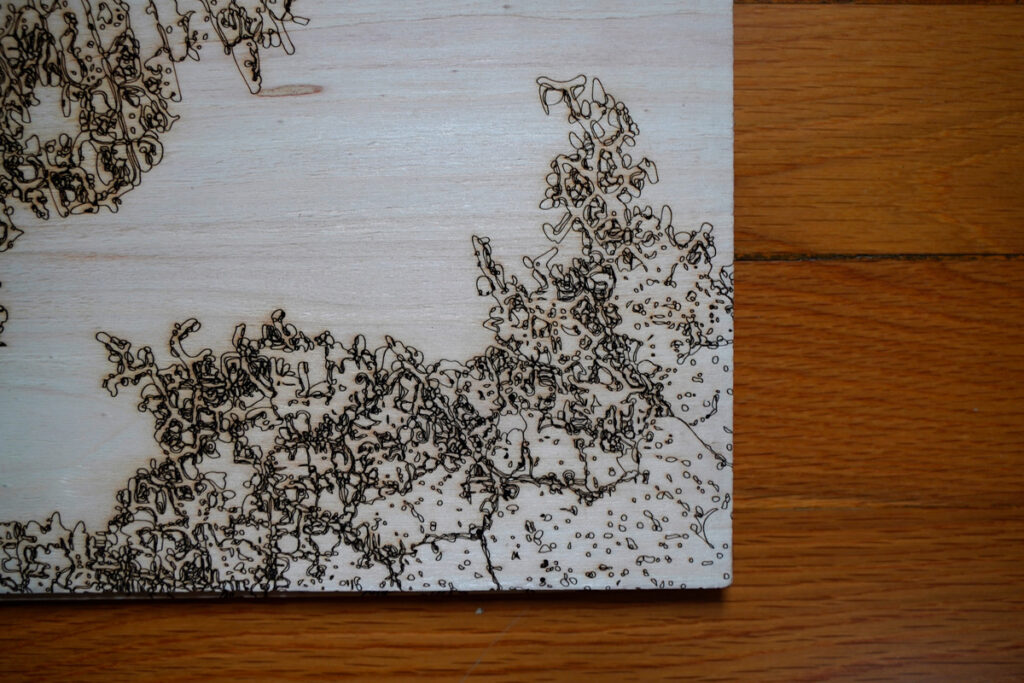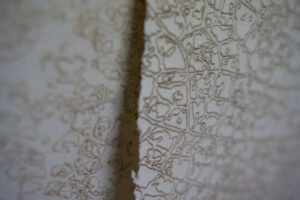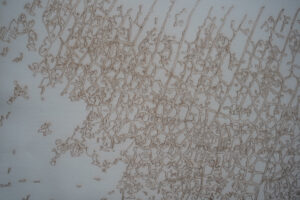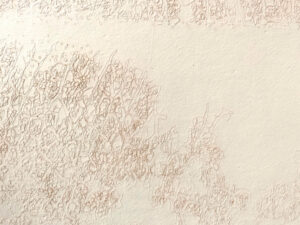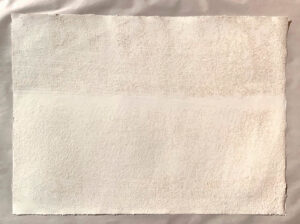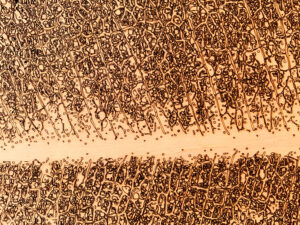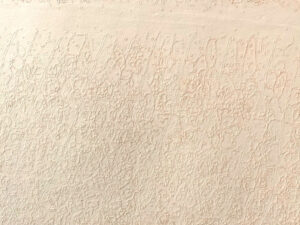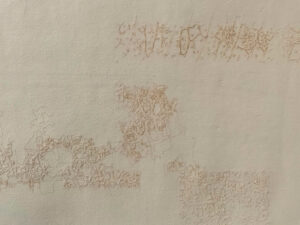Through an art-science collaboration in the Amazon rainforest of French Guiana, the internal structures of leaves are approached as micro-landscapes, evolving from concrete forms to abstraction. This process began with a scientific study of seven tropical plant species, proposing a multidimensional approach to each species to achieve a ‘total’ understanding of the specimen. Within this approach, the scanner was employed as an imprint, recording a primary natural matrix.
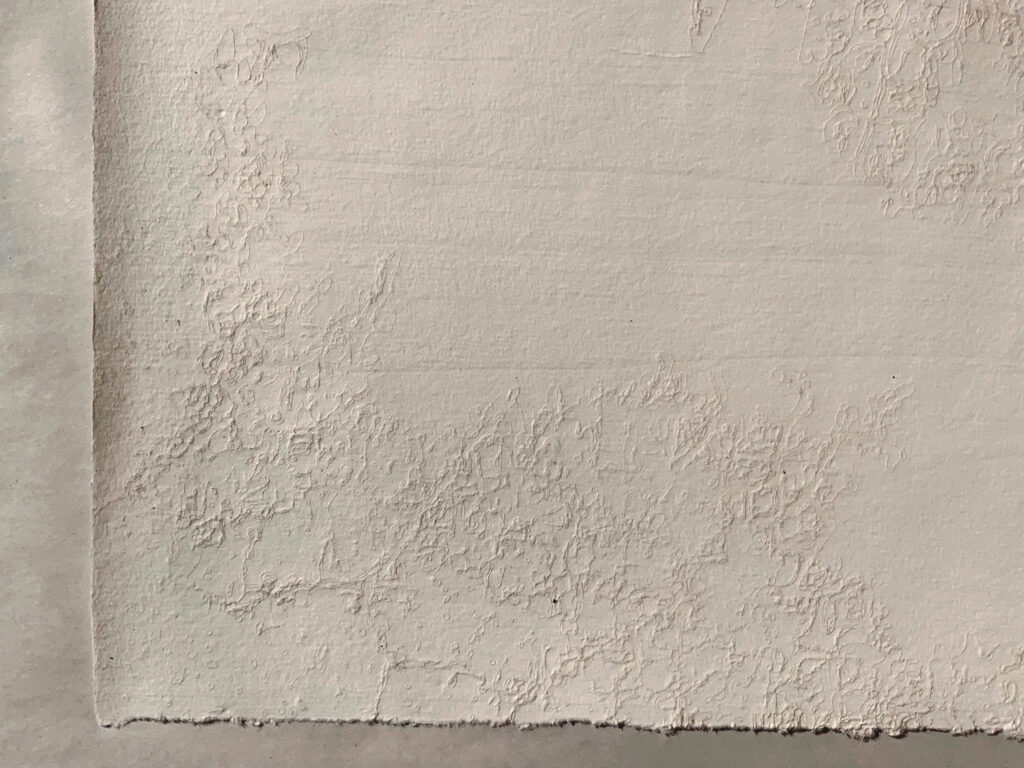
Laser-xylography embossed print
Using the scanned image and following specific guidelines, a digital matrix—an intangible template—was created. This image is then interpreted and modified (without manual intervention) by the software of a laser-cutting machine. During the cutting process, diverse pathways, both invented and imaginary, emerge: intermediate states that ultimately lead to a tactile woodcut matrix.
Based on the concept of multiplicity inherent in printmaking techniques, limited-edition prints are produced, each marked by residual elements. This objective, pre-defined methodology applied to a laser cutter questions the authorship of creation, removing individual agency from the creative process and prompting an exploration of the artist’s role in contemporary creation.
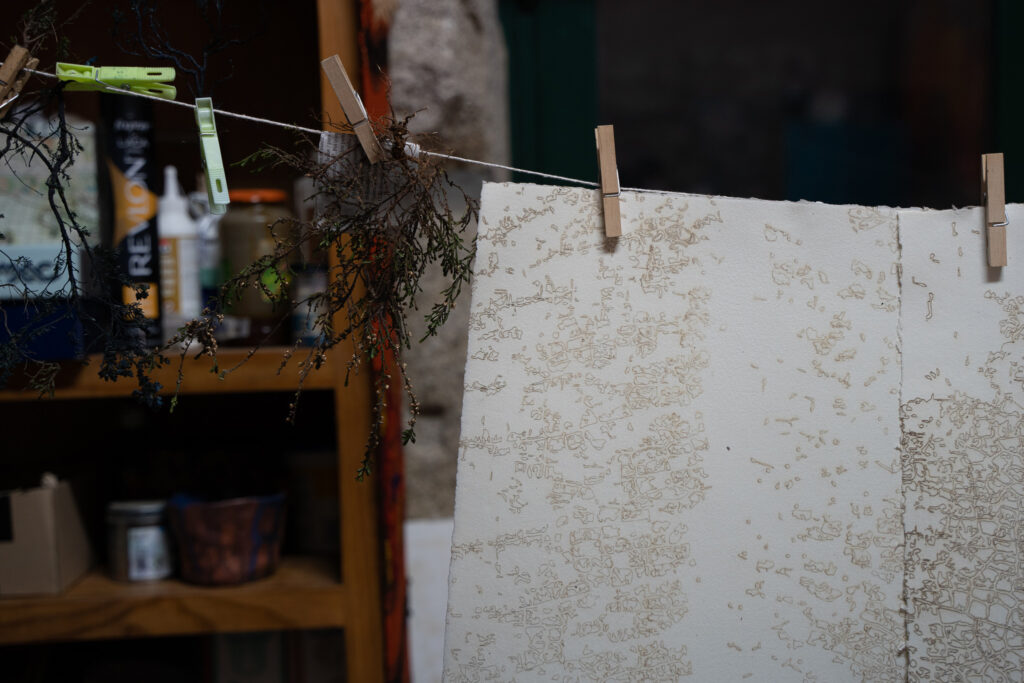
The use of the scientific method—systematic observation, measurement, experimentation, and the formulation, analysis, and modification of hypotheses—yields wandering results that hover at the boundaries of scientific language and artistic sensitivity. The process recreates emotional landscapes with interconnections of neural-natural and physical elements, embodying subjective natures.
Technical Information
Type of Work: 3 unique prints.
Edition: Artist’s proof (P.a).
Paper and Image Dimensions: 50 x 35 cm.
Technique: Embossing using laser-cut woodblock printing.
Materials: 300 g Hahnemühle paper, laser-cut matrix, 4 mm plywood.
Production Workshop: Faculty of Fine Arts, Pontevedra.
